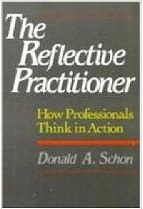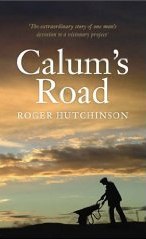 I have just finished reading Schön’s “The Reflective Practitioner“. It is one of those books that you feel you ought to have read years ago, resonating so much with many of my own thoughts and writing about creativity and innovation. However, I found myself at odds slightly with the adversarial dualism between science and practice, but realise this is partly because it is a book of its time. I will return to this later.
I have just finished reading Schön’s “The Reflective Practitioner“. It is one of those books that you feel you ought to have read years ago, resonating so much with many of my own thoughts and writing about creativity and innovation. However, I found myself at odds slightly with the adversarial dualism between science and practice, but realise this is partly because it is a book of its time. I will return to this later.
ways of knowing
The central message is about the value of reflection in professional action (as the name would suggest), but throughout Schön also emphasises the incredible artistry of professional practice, mirroring similar comments about craftsmanship in Sennett’s “The Craftsman” (see post “Total Quality, Total Reward and Total Commitment“). Schön describes three main levels of professional knowing:
- knowing in action — The day to day artistry exhibited in the performance of professional activity, not necessarily captured in rules, formulae or explicit knowledge, but constantly worked out in action and often drawing on rich background of past experiences.
- reflection in action — The examination, analysis and experimentation needed during the process addressing singular situations; often making the criteria and knowledge of action explicit and moreover often shifting from problem solution to problem formulation. This is revealed especially in the expert-novice situations that Schön uses to illustrate the book.
- reflection on action — The far rarer, and hence less well exemplified and discussed, post-hoc examination of the professional activity and process, allowing one to question and refine one’s means for bearing experience and knowledge to bear during action.
However, Schön is himself engaged in a higher level of reflection, examining the nature of reflection itself. Indeed late in the books, he discusses the potential for an “action science” alongside rich examinations of vignettes of professional activity.
Personally, this takes me back to the time in 1995 when I needed to give a lecture on “research methods” in a computer science setting and so first found myself having to reflect on my own methods and effectively becoming a researcher about research.
teaching the ineffable — ideals and reality
Artistry can be seen as mysterious and ineffable. In my own work, I have found myself addressing a variety of areas, including creativity, writing, debugging and reflection itself, that are often regarded as unlearnable or at least unteachable, only attainable through innate gift or apprenticeship. In each, I have sought to use a combination of personal reflection, available literature, and analysis to understand at least some aspects of the ‘art’, and then turn these into practical advice or methods1. This is not to take away the skill and artfulness of expert performance, but to find props and scaffolding to enable the novice to achieve and grow.
Schön likewise does not stop at describing and analysing vignettes of professional artfulness in action, but notes the blockages to more successful professional activity and offers potential ways forward. In particular, he analyses some of the blocks to reflection in action, often about face-saving and political games. He also advocates a potential form of professional relationship with clients, the “reflective contract”, where the practitioner is much more open about problems, ambiguities and uncertainties, opening up the process of professional action to the client and inviting the client’s own expertise and knowledge into the process. This reminds me very much of the goals of participatory design.
Such practices maybe need radical cultural shifts in organisations and disciplines not just individual practitioner–client relationships. In a world of litigation it is often better for a client to remain in ignorance and trust to the professional indemnity insurance of the expert! Even in academia papers that admit the limitations and problems with a technique are likely to be reviewed more harshly than those that extol their own benefits.
science and practice
While the central practical message is about the positive role of reflection in professional practice, in fact this is set within a broader context in which the book a whole is an apologetic for the value of professional practice against positivist, rationalist views, which try to make practice simply the application of science and academic knowledge.
Reading it at a time when UK government policy has for several years been pushing for vocational pre-18 training to be treated on a par with academic A’ levels, it would appear that Schön was simply a man out of his time. However, as this quest for ‘equivalence’ has also led to the virtual death of more vocational post-18 training being replaced by university degrees for everything, maybe Schön would not be so happy2.
Writing in 1980, Schön was reacting to the perceived devaluation of professional artistry, and places himself as an advocate. However, reading it in hindsight thirty years later in an academia where the term ‘positivism’ is derogatory, and distrust in science is at least as strong as distrust in professionals, I wonder if this dualism between academia and practice is what needs to be challenged. Schön discusses the way reflective practice can help practitioners come outside the ‘frame’ within which they have conceived a situation and thus have fresh eyes. For Schön, his own frame is the implicit acceptance of the dualism.
Paradoxically, in his actual actions, Schön is breaking this frame. In his reflection upon the nature of professional practice, he is precisely lifting aspects of this into the realm of more academic analysis. Indeed he speaks of the potential for “action science” (p. 319). So in his own terms, as a professional whose subject is professional activity, he exhibits in his knowledge-in-action a nuancing of the academic-practice dualism, which is missing in his reflection-on-action!
One particular passage caught this tension perfectly. Schön is discussing the problem of demystifying professions and cites Illich’s critique of technical expertise as a form of social control. Schön then says:
“Paradoxically, it is not uncommon to discover that the very same students of the professions who hunger for the “hard” technical skills which they believe will assure then of jobs in established institutions also espouse the radical vision of demystifcation.” (p. 289)
The term ‘paradoxically’ should surely prompt reflection on the implicit judgements behind the statement. As someone coming from a technical background, it seems hardly surprising that the ‘hard’ technical skills (which I take to mean, engineering, management science, etc.) are demystifying. Even if the language of mathematics in an engineering book may take some learning, the whole point is that one can take up a textbook and learn necessary knowledge from there, not wait for mastery to grow over years of experience. This aspect of science is radical, and sometimes breeds resistance; indeed Newton deliberately cast his Principia Mathematica in geometry not algebra for fear the undeserving would understand it.
At its best, in human–computer interaction, we do see a constructive dialogue between HCI academia and interaction design practice, where academic knowledge both contributes to professional practice and learns from it. Mainly this is applied to the artefacts we produce and the people who use them, but perhaps less to the process of design itself.
Similarly in my own first discipline, mathematics, the basic equations and knowledge of more applied mathematics are learnt early and studied in depth. This universal knowledge is applied repeatedly and I would hope artfully, in the singular situations of professional practice. For example, in my own practice I recall using functions of complex numbers in modelling electrostatically-charged agricultural sprays. However, whilst the subject matter of the mathematics is codified explicitly, the process of applying this knowledge in professional practice is not usually itself studied as part of mathematical training; instead assumed to be something one picks up over time — still mysterious.
Although it is not the way he would phrase it, Schön’s work demystifies and systemises aspects of professional practice, by effectively bringing some of the artistry under the academic lens. This codification of the ineffable seems a laudable goal and science at its best. If seen as replacing professional experience it is clearly misguided, but so long as the codified knowledge of engineering, science and indeed HCI is seen as partial, and limited it becomes valuable. Codified ‘hard’ technical knowledge and rules may de-skill parts of professional practice, but also enables professions to grow by offering generic or universal knowledge that can be applied artfully to the particular.
artful application
 I have also been reading “Calum’s Road” about a crofter on the little island of Raasay off the coast of Skye, who built by hand, pick and barrow a 2 mile road across Raasay, over a period of 10 years. Calum built his road, a work of artistry and graft, based neither on a university course, nor on a long period of professional experience, but instead using the codified knowledge in a civil engineering book on road construction3.
I have also been reading “Calum’s Road” about a crofter on the little island of Raasay off the coast of Skye, who built by hand, pick and barrow a 2 mile road across Raasay, over a period of 10 years. Calum built his road, a work of artistry and graft, based neither on a university course, nor on a long period of professional experience, but instead using the codified knowledge in a civil engineering book on road construction3.
- See my pages about “research and innovation“, “writing as third-order experience“, “externalisation– how writing changes thinking“, and “why examples are hard“. I keep meaning to turn my debugging lectures into notes or a short book … someday.[back]
- Certainly the Car Gilleard, the CEO of the Association of Graduate Recruiters in the UK is not enamoured at the idea of university degrees as the only career path: see The Big Issue Scotland, no 776, March 15-21, 2010, p.9 [back]
- Thomas Aitken, “Road Making and Maintenance”, London, 1900[back]
Hi Alan,
How are you? I’ve been studying about aesthetics experience that relates to children creativity. I would like to seek help and advice from you regarding this issue. Perhaps for the beginning, you could suggest me some reading that could help me explore this area.
thanks,
fariza
first thought about children and creativity is “try stopping them” 😉
however, I can’t think of any particular books or papers. One start for things related to IT in this area would be the ACM Interaction Design for Children (IDC) conference series:
http://portal.acm.org/browse_dl.cfm?linked=1&part=series&idx=SERIES11165&coll=portal&dl=ACM